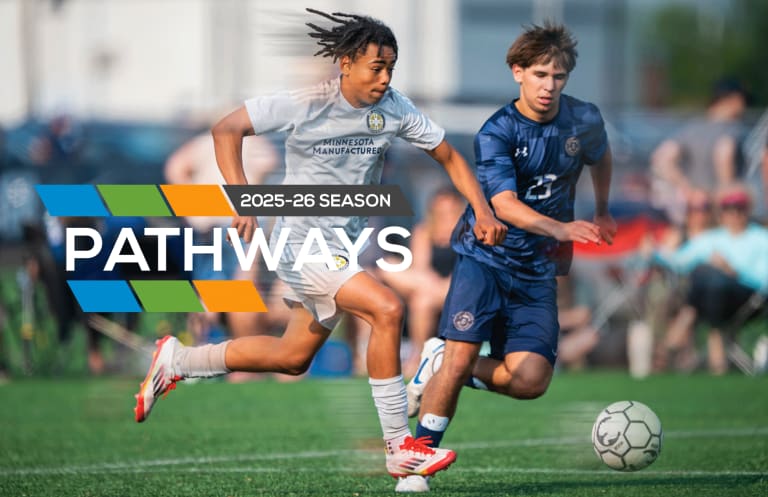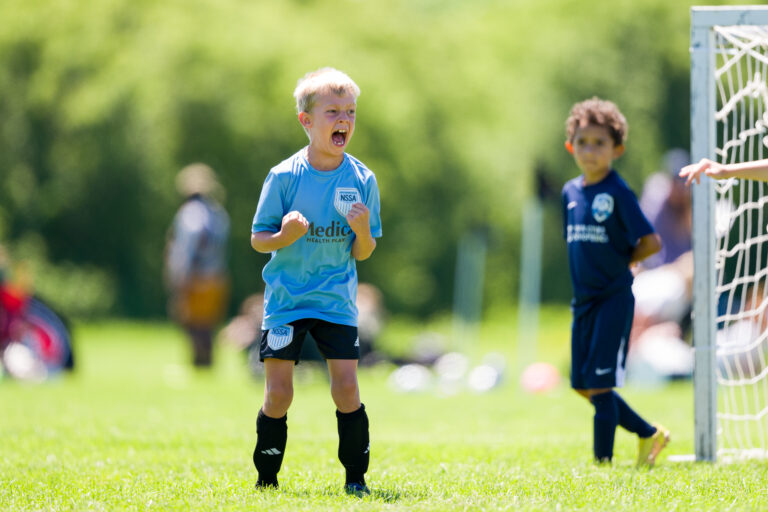These new laws are in effect! The changes are summarized below.
What is IFAB?
The International Football Association Board (IFAB) is the body that determines the Laws of the Game. It is a separate body from FIFA, but FIFA’s approval is necessary for any IFAB decision.

FIFA recently announced changes to the Laws of the Game for 2019-20. The changes are substantial.
This document is also helpful which summarizes the changes as well as rationale for each change.
[headerbar]Law Changes Video – Part 1[/headerbar]
Substitution Mechanics
A player who is being substituted must leave the field by the nearest point on the touchline/goal line (unless the referee indicates the player can leave quickly/ immediately at the halfway line or a different point because of safety, injury etc.)
Kickoff
The team that wins the coin toss can now choose to take the kick-off or which goal to attack (previously they only had the choice of which goal to attack)
Dropped Ball
- If play is stopped inside the penalty area, the ball will be dropped for the goalkeeper
- If play is stopped outside the penalty area, the ball will be dropped for one player of the team that last touched the ball at the point of the last touch
- In all cases, all the other players (of both teams) must be at least 4m (4.5yds) away
- If the ball touches the referee (or another match official) and goes into the goal, team possession changes or a promising attack starts, a dropped ball is awarded
Misconduct
If the referee is about to issue a YC/RC but the non-offending team takes the free kick quickly and creates a goal-scoring opportunity, the referee can delay the YC/RC until the next stoppage if the offending team was not distracted by the referee
Wall Management
When there is a ‘wall’ of three or more defenders, the attackers are not allowed within 1m (1 yd) of the wall; an attacker less than 1m (1yd) from the ‘wall’ when the kick is taken will be penalized with an indirect free kick
Goal Kicks/Free Kicks Inside Penalty Area
- The ball is in play once the kick is taken; it can be played before leaving the penalty area
- When the defending team takes a free kick in their own penalty area, the ball is in play once the kick is taken; it does not have to leave the penalty area before it can be played.
- Opponents must remain outside the penalty area until the ball is in play.
[headerbar]Law Changes Video – Part 2[/headerbar]
Team Officials May Now Be Cautioned (YC) or Sent Off (RC)
- A team official guilty of misconduct will be shown a YC (caution) or RC (sendingoff); if the offender cannot be identified, the senior coach who is in the technical area at the time will receive the YC/RC
- If the offender cannot be identified, the senior team official (usually the main coach) in the technical area will receive the YC/RC (as the person responsible for the other team officials).
[headerbar]Law Changes Video – Part 3[/headerbar]
Handling Definitions
- Deliberate handball remains an offense
- The following ‘handball’ situations, even if accidental, will be a free kick:
- the ball goes into the goal after touching an attacking player’s hand/arm
- a player gains control/possession of the ball after it has touches their hand/arm and then scores, or creates a goal-scoring opportunity
- the ball touches a player’s hand/arm which has made their body unnaturally bigger
- the ball touches a player’s hand/arm when it is above their shoulder (unless the player has deliberately played the ball which then touches their hand/arm)
- The following will not usually be a free kick, unless they are one of the above situations:
- the ball touches a player’s hand/arm directly from their own head/body/foot or the head/body/foot of another player who is close/near
- the ball touches a player’s hand/arm which is close to their body and has not made their body unnaturally bigger
- if a player is falling and the ball touches their hand/arm when it is between their body and the ground to support the body (but not extended to make the body bigger)
- If the goalkeeper attempts to ‘clear’ (release into play) a throw-in or deliberate kick from a team-mate but the ‘clearance’ fails, the goalkeeper can then handle the ball












